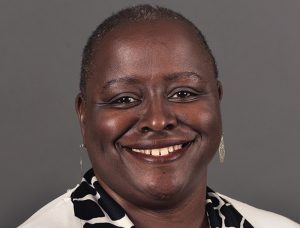
Fans of several NHL teams may have been noticing the creation of land acknowledgements, in which teams publicly recognize that their facilities sit on land stewarded by Indigenous peoples since time immemorial.
Western Michigan is one of a growing list of universities also participating in this practice.
In September 2019, the university’s trustees approved an institutional land acknowledgment statement created earlier that year as a collaborative effort between WMU graduate students and representatives from the Council of Three Fires. Both WMU and nearby Kalamazoo College sit on ancestral lands of the Pokagon Band of Potawatomi, Match-E-Be-Nash-She-Wish Band of Pottawatomi and the Nottawaseppi Huron Band of Potawatomi peoples.
WMU’s institutional land acknowledgement statement, which can be found on the university’s diversity and inclusion office website, is printed in the school’s commencement bulletin and several other campus publications.
The school’s athletic department was an early adopter of the institutional land acknowledgment. It is publicized in game programs, livestreams and on pregame announcements read over public address systems at home games, including those at Lawson Ice Arena.
“As it’s an institutional statement, we asked all the units across campus to utilize the statement,” said Candy McCorkle, Western Michigan VP for diversity and inclusion. “We don’t mandate that they have to use it, but athletics was one of the first units to say, ‘Hey, we like this.’”
Scripts for PA reads, program notes and the like are crafted to show WMU’s athletic department’s own recognition of the university being located on lands historically occupied by the Ojibwe, Odawa, and Bodéwadmi nations. Fans and others in attendance are asked to take a moment to acknowledge and honor those lands, as well as the sacred lands of all Indigenous peoples.
WMU isn’t the only university in the state that has crafted a land acknowledgment statement. The University of Michigan also has one, as does Michigan State University’s anthropology department.
WMU’s land acknowledgment is part of the university’s focus on working in tandem with area Indigenous communities. Data from the end of the Spring 2021 semester indicates that 0.3 percent of WMU’s student population identified as being of Indigenous descent.
“A commitment I have made is to try and address all of our marginalized communities,” she said. “It’s realizing that, how can we have 0.3 percent Indigenous students when we sit in the middle of three tribes? How do we increase that?
“It’s not just, ‘Oh, bring your students to us,’ but it’s also thinking about how we develop a partnership with our Indigenous communities. You have to invest in the community, and there has to be a partnership.
Feedback from area Indigenous communities has been good, McCorkle said. She noted, however, that the university’s efforts to strengthen those ties must be continuous.
“I have encouraged any of us who choose to reach out to make sure that it is a partnership,” McCorkle said. “Never approach it as, ‘Oh, I’m going to do this for you.’ People don’t need you to do something for them; they want to do something with you. Always taking that attitude has made this a positive relationship.
“My advice to any college that has reached out to me is: do not do this in a vacuum. Make sure you’re working with your tribal partners in doing this. The statement should not be something you do as an institution, for your institution. It should be doing something with (Indigenous peoples) to recognize that we have a shared history, and that statement is a first acknowledgement of that.”


